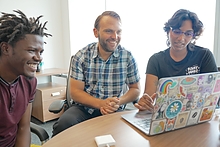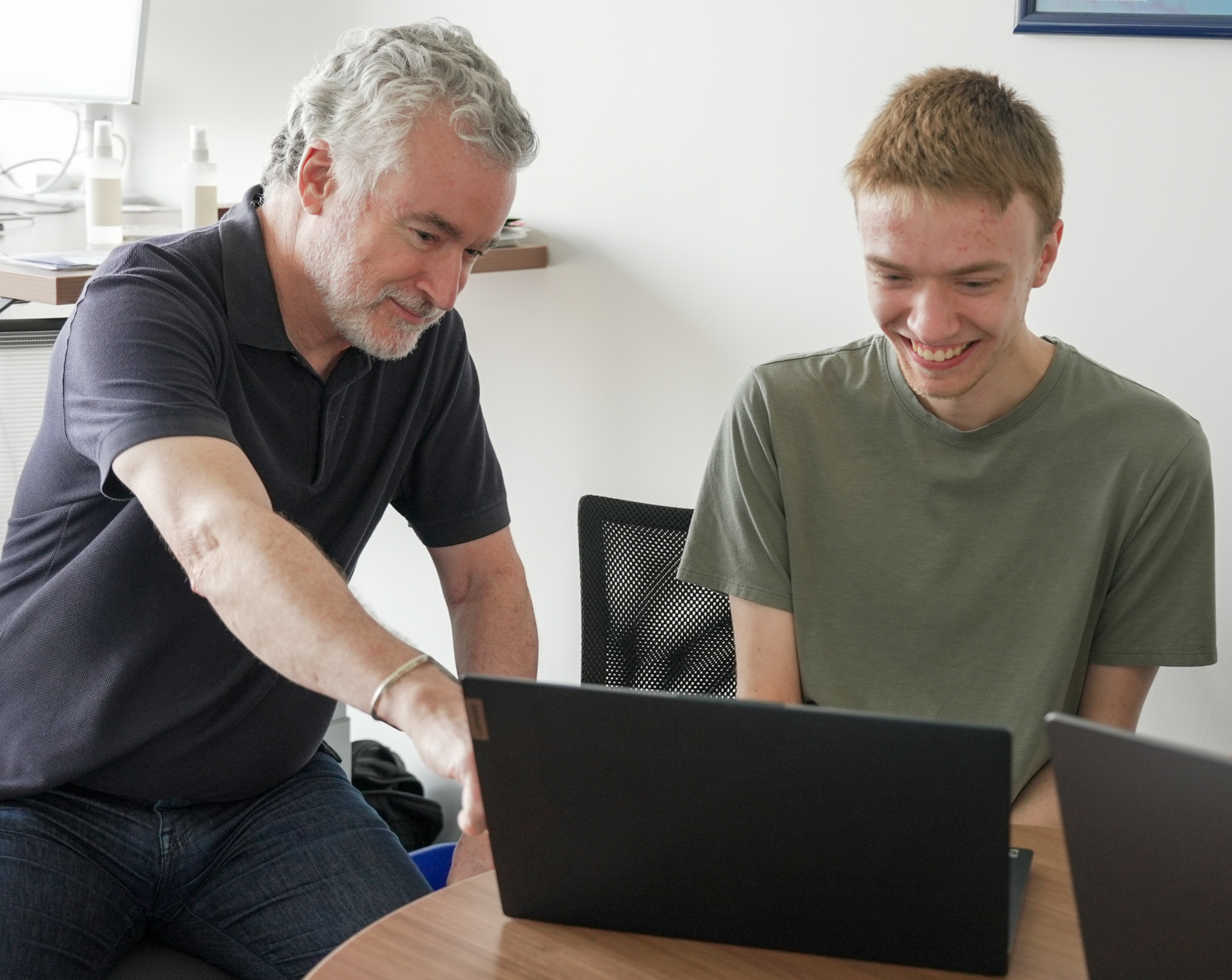REU Bioinformatics Program Immerses Students into Interdisciplinary Research

A dozen students from around the country are gaining invaluable research skills in bioinformatics this summer at the University of Maryland (UMD) as part of a Research Experience for Undergraduates (REU) program.
Sponsored by the National Science Foundation, the Bioinformatics Research in Data Science for Genomics (BRIDGE) REU exposes visiting undergraduates to interdisciplinary training needed to process and analyze large scale genomic datasets.
The hands-on program places students in pairs, partnering them with a faculty mentor for a 10-week research project that concludes on August 9. Each student receives a weekly stipend, room and board, and the opportunity to collaborate with some of the university’s top experts in computational biology.
“We want to give them an opportunity to learn what research is about, so they can decide if they want to follow a research career,” says Mihai Pop, a professor of computer science and director of the University of Maryland Institute for Advanced Computer Studies (UMIACS). “We're giving them the experience of what it’s like to do authentic research.”
Pop is one of several faculty in the Center for Bioinformatics and Computational Biology (CBCB) that are active in this year’s REU.
He is working with students and others to identify phage plasmids. Phages are a type of virus that infect the bacterium, inserting themselves in the bacterium genome and potentially reproducing and killing the cell.
Plasmids are another structure in chromosomes that exist within bacterial cells that are known for carrying antibiotic resistance. Some phages masquerade as plasmids when they infect bacteria.
There is very little information available on the process of a phage morphing into a plasmid, so Pop’s group is doing an analysis on bacterial communities from the human gut to learn more.
“Students are trying to classify pieces of DNA that we think look like plasmids and decide whether those are just plasmids, or they are phage plasmids,” explains Pop, who is leading this year’s BRIDGE cohort at UMD.
Seth Commichaux, who is currently a bioinformatics research scientist at the U.S. Food and Drug Administration (FDA), is also active in this year’s BRIDGE program, mentoring a pair of students that are also looking into plasmids.
“Where I currently work, I don't have much access to students. Most of my interactions are with people either at my level or more senior,” says Commichaux, who graduated from UMD in 2022 with a doctoral degree in computational biology. “Being able to mentor skilled undergraduates is something that I really enjoy, and it's been very rewarding.”
Sahana Rangarajan is one of two students working with Commichaux. Rangarajan, who is visiting from the University of California San Diego, had done prior work involving bacteriophages. Determining the host range of plasmids and bacteriophages involve similar logic, according to Rangarajan.
James Mwihaki, a computer science major at MidAmerica Nazarene in Kansas, is the other student being mentored by Commichaux.
The ability to bring their past research experience and apply it to this REU is something both Rangarajan and Mwihaki say they value.
“I’m able to draw from my background a lot to inform the direction we’re going with in terms of how we’re approaching and what biological features we’re going to be working with,” says Rangarajan.
Michael Cummings, a professor of biology and the director of the CBCB, is part of a group of researchers partnering with a local drug rehabilitation center to identify trends that can translate into tailored treatment plans and improve recovery rates for people struggling with addiction.
Cummings (pictured left) is working this summer with several REU students on that project, applying machine learning algorithms to electronic medical record data to measure various patient experiences and outcomes.
Ryan Schuenke (pictured right), who is entering his senior year at Drake University, is collaborating with Cummings on the project. Schuenke says the program hasn’t been exactly what he envisioned, but has proven invaluable, nonetheless. 
“It filled in a lot of the questions I had regarding high-level research, and it reassured me that research is what I want to do,” he says.
There are two other BRIDGE research projects this summer led by CBCB faculty.
Heng Huang, a Brendan Iribe Endowed Professor in Computer Science with an appointment in UMIACS, aims to test the relationship between single-cell RNA sequences and the genetic information of the cell. His REU team hopes to build a machine learning model to predict the phylogenetic information from RNA count data.
Rob Patro, an associate professor of computer science with an appointment in UMIACS, is leading an REU group developing a sequence search engine over the CHESS database, which contains 27 million identified human genomic transcripts. The REU team is hoping their system will avoid re-discovery of transcripts that are unlikely to be functional, as well as provide potential evidence that previously identified database sequences may have a meaningful biological function.
— Story by Shaun Chornobroff, UMIACS communications group
In 2024, there are three other REU’s active on the Maryland campus in addition to the one focused on bioinformatics. Bill Gasarch, a professor of computer science, leads an REU focused on machine learning and AI, among other topics. Maria Cameron, a professor of mathematics and member of the UMD Center for Machine Learning, is leading an REU on modern topics in pure and applied mathematics; and the Institute for Trustworthy AI in Law & Society is running an REU focused on participatory design, methods and metrics, and evaluating trust.
